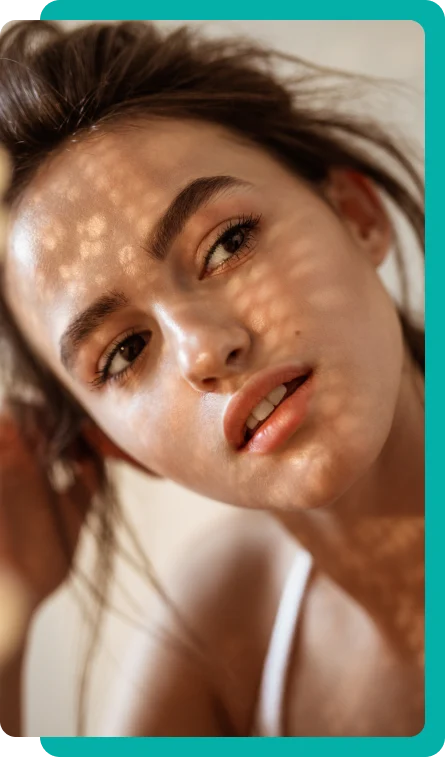For Patients
About
For Providers
Locations
Blog
Contact
Menu
Dermal filler treatment is a popular option for resolving mild to severe facial wrinkles and augmenting the face for enhancements without facial plastic surgery, requiring minimal downtime and causing fewer health risks. But while they're rare occurrences, only happening usually with inexperienced injectors, dermal filler complications are still possible. One of these complications is vascular occlusions.
So when can vascular occlusions happen after dermal fillers? The time of onset of vascular occlusion symptoms varies depending on the case - they can show as soon as you've been injected with the solution or may take even long enough at 24 hours. Many patients also mistake this as simply a minor bruise. That's why the case requires a highly-trained professional to arrive at an accurate diagnosis and receive immediate medical attention.
The onset of symptoms of vascular occlusion from dermal filler treatment can vary depending on the case, but it can show up immediately after receiving the facial filler injection or as late as 24 hours.
A vascular complication from cosmetic injectables is also complex because it can be mistaken as a simple post-procedural bruise. Patients with bruises or suspected vascular occlusion must consult a highly-trained professional to diagnose their symptoms and receive a suitable treatment to avoid further risks.
Complications from having a dermal filler treatment are rare and mostly happen only when having the procedure from inexperienced injectors. Dermal fillers treatment is usually a low-risk cosmetic solution involving only injections of a gel-like substance to add volume to the skin and boost collagen production.
Patients may have facial filler procedures for anti-aging and facial augmentation. Dermal fillers come in many types and brands, with hyaluronic acid filler being one of the most popular. Hyaluronic acid filler and many dermal filler types are FDA-approved for delivering specific results for different treatment procedures, from soluble consistencies for lip fillers to dense formulations for jaw enhancements.
Vascular occlusion refers to the obstruction of a blood vessel by external compression, foreign body, blood clot, or a dermal filler product. This keeps blood from passing through different tissues.
This condition can happen to the veins and arteries. But the case will be more serious when the obstruction lies in an artery, called an arterial occlusion. This blood vessel delivers oxygenated blood flows to different tissues and vital organs of the body, like the brain, heart, and limbs.
When left untreated, vascular occlusion may lead to more serious health conditions. It may be caused by injecting the dermal filler product into the arteries of blood vessels accidentally. Receiving too many dermal fillers in a given treatment area may also lead to this dermal filler complication.
Vascular occlusion may happen when the dermal filler material itself blocks the blood supply. The facial filler gets injected into a blood vessel accidentally instead of into the skin. Dermal fillers are supposed to be injected into the dermis to add volume to the treated area.
Every type and brand of dermal filler has a unique formulation to provide satisfactory results in specific treatment areas. Some dermal fillers are made to be soluble, while some are formulated to be denser and hold their form. Any of these types are dangerous once it has been injected into the blood vessel.
You must seek a highly-trained professional when having dermal filler treatments. They should be well-versed in the facial anatomy injection techniques to avoid vital points with blood vessels nearby.
Receiving too many dermal fillers than the recommended volume can also give you risks of having vascular occlusions. Having large amounts of dermal filler product in a treatment area may apply pressure to surrounding blood vessels and cause compression on a vein, artery, or capillary.
You might want to seek a reliable injector who can provide an expert assessment of your treatment area and come up with a suitable beauty plan to deliver your aesthetic goals safely. Some may want significant changes by requesting big amounts of facial fillers into their face, but a reliable practitioner will discuss its risks and reassure you in going through with their treatment plan.

Dermal fillers may come with several post-procedural side effects — these are pretty common self-limiting. Vascular occlusion may sometimes be confused with minor bruising because they look similar.
But you might want to check for other symptoms to observe if it’s a simple bruising or dermal filler complication. This condition can lead to serious risks, so early detection and treatment are necessary. You might want to look for bruising, swelling, blanching, coolness, pain, and skin death.
Every patient has a different tolerance to pain, so some might find their dermal filler injections a bit painful. But if your dermal filler injection caused severe pain that worsens hours after the procedure, it might be a sign of vascular occlusion.
This is especially when you only feel it on one side of the treatment area, like one cheek or one side of your lips. You might not notice the pain if your injector had applied numbing cream, so you can observe the probable symptoms after a few hours.
Discoloration of the skin or bruising is usually one of the signs of vascular occlusion after dermal fillers. But this is also one of the normal side effects of the procedure, so you might want to have a further assessment from a professional.
Bruising from vascular occlusion usually shows up hours after the dermal filler procedure. This is due to the skin receiving insufficient blood due to the blocked blood vessel, making them lack oxygen. The skin discoloration from a facial artery or vein obstruction gives a dusky, purplish color that turns blue-gray after some time. This dermal filler complication also changes color when you apply pressure, unlike a normal bruise.
You may also experience mild to severe swelling in the injection site and the surrounding areas. But like bruising, tenderness and soreness are also some common side effects of dermal fillers, so it might be tricky to tell if it’s a simple post-procedural reaction or a vascular swelling. You must have the swelling checked by a medical professional to rule out dermal filler complications.
You may also look paler or dusky when you develop a vascular complication due to an obstructed blood supply. This white skin color also won’t get better with having a massage or applying a warm compress and may even worsen after a few more hours.
Like other signs, blanching can also be a normal side effect of having a dermal filler injection. You can experience temporary paleness if your facial filler has a local anesthetic, like lidocaine. Some patients also receive vasoconstricting medications as a way to prevent bruising. Like many common side effects of facial filler injection, temporary blanching resolves on its own and doesn’t pose serious risks.
You may notice your skin getting cooler than usual if your dermal filler injection progresses into a vascular complication. You may also compare if the compromised skin feels colder than its surrounding area. This can be difficult to tell, so you might want to consult a medical professional. Cooling skin due to vascular occlusions is due to the obstruction in your blood vessels, preventing blood from flowing through your tissues to distribute oxygen.
If the vascular occlusion isn’t detected and treated, you might notice your skin turning black around 2 to 3 days after your procedure. This happens due to skin necrosis or skin death. The skin turns black and starts to die due to the obstructed blood flow, unable to deliver oxygen and nutrients to various tissues.
This injectable filler complication may still be resolved even when it has started to progress into skin necrosis. But it may take weeks to months to heal and require diligent wound care and surgical excision. Some patients have more interventional cosmetic procedures, like laser treatment or microdermabrasion to treat scarring. Treating tissue necrosis from vascular compromise might be easier and faster if detected early.
Injectable filler treatments are usually low-risk procedures, but they can lead to complications, like a vascular compromise. Vascular occlusions can also progress into more serious conditions if left undetected and treated.
That’s why you must keep in touch with your practitioner even during your recovery period to see through the success of the procedure. The risks of having vascular compromise from injectable filler treatments include skin tissue necrosis, blindness, and stroke.
Leaving vascular occlusion untreated can lead to necrosis or cell death due to lack of blood flow. This is different from apoptosis or normal cell death where it’s programmed to happen, so the body becomes prepared on flushing out dead cells.
During necrosis, your cells tend to swell before bursting and spreading their contents to nearby areas – a process called cytolysis. As mentioned, one of the signs of skin tissue necrosis is having your skin turn black, as if it’s decaying.
Blindness is also one of the most serious complications of vascular occlusion if left untreated. This happens when you receive high-pressure injections of facial fillers into the supraorbital, supratrochlear, dorsal nasal, and angular arteries.
These blood vessels are part of the branches of an artery called the external carotid artery. The dermal filler emboli obstructing these blood vessels will easily flow back to the ophthalmic artery due to having no valves. The blood circulation may retrograde to your eyes, causing blindness.
Vascular compromise from dermal filler injections may also lead to stroke if left undetected and untreated. The dermal filler product accidentally injected into the arteries will be pushed by the pressure of the blood to your intracranial circulation, resulting in a stroke.
Vascular occlusion from a facial filler injection is treatable, especially if detected early on. As mentioned, it’s a pretty rare occurrence. According to a study, it happens only in one out of 40,882 syringes via microcannula injector and one out of 6,410 by the needle when administered by a board-certified dermatologist. Your practitioner will do the following methods to treat vascular complications:
These methods will resolve dermal filler complications of the blood vessels. Early detection and treatment are crucial for treating vascular occlusion, avoiding progression into more serious conditions.
While vascular occlusion and other dermal filler complications are highly rare, you might still want to know how to avoid them. Both patients and practitioners must be keen enough to ensure the safety and effectiveness of their injectable filler procedure, like:
Dermal filler treatment is usually a safe and effective treatment option, as long as patients receive their procedure from highly-trained practitioners and injectors would have the proper training needed.

Vascular occlusion is one of the rare complications of dermal filler treatment. It may happen as early as receiving the injectable filler or as late as 24 hours post-treatment. When left untreated, this condition can lead to more serious complications, like blindness, necrosis, and stroke. Patients can reduce their risks of experiencing unwanted effects by getting cosmetic procedures from highly-trained injectors.
Dr. Lanna Aesthetics is the top injector in New York City, giving world-class dermal filler procedures and other facelift solutions. You can expect to have the safest and most effective cosmetic injectable possible here at our clinic. You’ll be treated by the best board-certified professionals, producing celebrity-level results. Get started on your beauty journey today by scheduling a consultation with us today.

Join Dr. Lanna & Dr. Doshi for a Transformation
Unlock the possibilities with our certified facial and oculofacial plastic surgeries. Attend our free webinar to find out how we can tailor solutions for you, with financing available to fit your budget.
